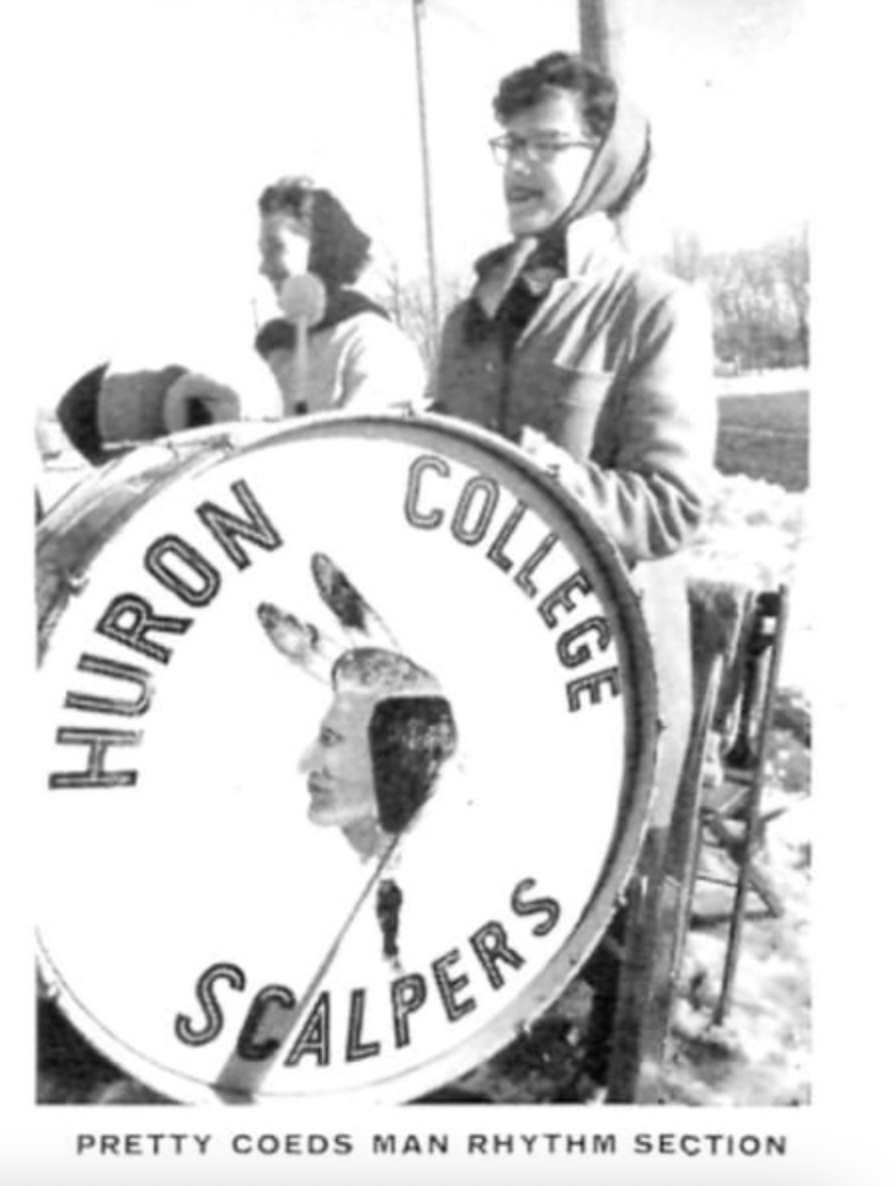By Jesse Spector
Continuing the project that I referenced in yesterday’s Pavilion, I was looking to see who coached Centre College from 1938-41, and thus had young assistant DeWitt Weaver on staff. Instead, I found Centre president Dr. Milton Moreland’s carrot cake recipe.
This project also took me last night to 1959 in South Dakota, and another Sports Illustrated piece, this one by Roy Terrell, “Normalcy In A Small World.” Fellow fans of the Sickos Committee, which of course you are…


…will enjoy diving into this.
To the millions of football fans who focus their attention each Saturday afternoon on Syracuse and Southern Cal, on Northwestern and Texas and LSU, small-college football is a world apart. Yet there are far more small colleges in the U.S. than big colleges and hundreds of them play football every weekend in the fall. Some play very good football indeed.
In this number there are big, wealthy schools, which are smalltime only in an intercollegiate athletic sense: Cal Poly, with its enrollment of 5,000; Mississippi Southern, with 3,825; and dozens of schools, such as East Texas State and Mankato Teachers of Minnesota and Hofstra on Long Island, all around 3,000. Then there are the medium-size small colleges, schools with 800 or 1,000 or 1,200 students, like Lenoir Rhyne in North Carolina, Juniata and Bloomsburg in Pennsylvania, Hope and Hillsdale in Michigan, Adams State in Colorado, Whittier in California, Willamette in Oregon. They play good football, too.
And finally there are the small small colleges: Emporia of Kansas, Presbyterian of South Carolina, Sewanee of Tennessee—and Huron. Governed in most cases by the NAIA (National Association of Intercollegiate Athletics) rather than by the NCAA (National Collegiate Athletic Association), even their rules are different. They still have unlimited substitution, for example, to which the big schools are slowly returning. Freshmen are eligible for varsity competition. They have never adopted the two-point conversion nor have they widened their goal posts, partly because many of them can't afford to pull down and put up new goal posts every few years. But the game is the game; that isn't hopscotch Huron has been playing out there.
One thing, though: it’s definitely a piece that is of 1959. Huron College, which was a college before South Dakota was a state, called its teams the Scalpers. They later became the Si Tanka University Screaming Eagles before the school shut down in 2005. In 1959…
…like I said, the SI piece was of 1959. But that also means that the ending comes across in a sweet and charming way that it probably wouldn’t if it were written today, even if the feelings of joy that we get from sports at this level are so similar.
I think that’s something people look for a lot, and try to recapture, the sweetness of their youth, or the charm of the times before they were born, that they heard about from parents and grandparents. Nostalgia can be wielded in dangerous ways, as the very phrase that came to define a neofascist movement should make clear. It’s also worth remembering the positive appeal, that even in things we’ve come to be cynical about, there’s something good, and reasons that we fell in love, and often that generations before us did, too.
The nickname, the mascot cartoon, the “pretty coeds” caption… all stuff that wouldn’t make most readers have a second thought in that era. Three years later, Terrell was still at SI, and had a piece in the college football issue, which…


This is also of the time, right? But waving the Confederate flag is so much louder, something that never was about honoring heritage and tradition unless you’re talking about a heritage and tradition of racism — it’s a good thing that it’s become more common knowledge that Dixie fetishization and its incorporation into “traditions” was directly connected to Jim Crow and responding to the civil rights movement. Just because Huron College was a tiny school, without any of the clout of Ole Miss or the SEC, we can’t just give it a pass.
There are different levels of contempt available to us, and that’s important when we try to contextualize things. The Huron coed and the Ole Miss cheerleaders both have some old-timey racism going on, but there should be a discernible difference between a school drum and the flag of violent racist traitors.
Speaking of violent racists, that Roy Terrell story on Woody Hayes included a gem of an anecdote:
Two years ago, as a spectator at a game in Cleveland between the Indians and Yankees, Hayes suffered through the one-handed artistry of Vic Power at first base until he could stand it no more. "You're showing off," Hayes yelled from his box near the Indian dugout. "Why don't you use both hands and help your team win?" Power, whose ears are as good as his hands, dropped over and invited Mr. Hayes to discuss the matter further after the game; Hayes, probably figuring that much of the 230 pounds he carries these days is relatively useless in hand-to-hand combat, went home instead. He didn't go back to watch the Indians again until they traded Power to Minnesota. "That guy makes me sick," he says. "What's he got two hands for?"
Two paragraphs earlier, Hayes had slugged a reporter, which he denied but an assistant cheekily didn’t. But the big toughie suddenly zipped his lip and ran away from Cleveland Stadium until Power — not really a huge dude — wasn’t there anymore because he was scared.
In case there was any doubt of Hayes being exactly the kind of jackass in 1960 that he’d be for another two decades with unchecked power at Ohio State, that year Power won the third of his then-record seven Gold Gloves. He now trails only George Scott, Don Mattingly, and Keith Hernandez.
Hayes, meanwhile, has been surpassed as the Buckeyes’ biggest human paraquat of a head coach by Jim Tressel and Urban Meyer. Of course, Hayes had to walk so that they could run.
The man who can make Woody Hayes sickest of all is the archenemy, Jack Fullen, alumni secretary at Ohio State. Fullen once proposed that the school give up all pretense at amateurism, hire a professional team and control it under a bureau of football.
Fullen, who never wanted Hayes at OSU in the first place1, did wind up managing to keep the Buckeyes out of the 1962 Rose Bowl... but obviously Hayes stayed right up until 1977, when he punched a cameraman during the Ohio State-Michigan game.
Haha, just kidding, Hayes kept his job a whole ‘nother year after that, until he punched Clemson’s Charlie Bauman during the Gator Bowl.
They should’ve listened to Jack Fullen. If only he’d had a carrot cake recipe.
Not that Paul Hornung.















Share this post